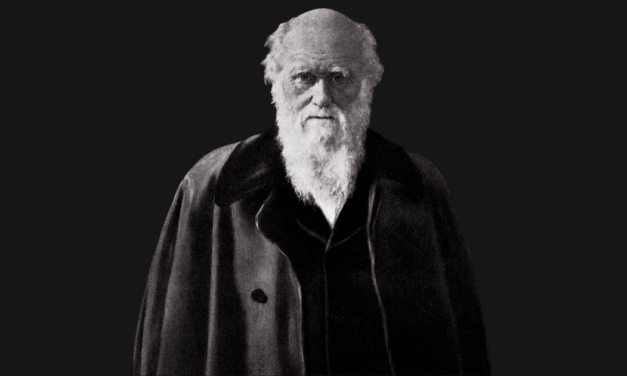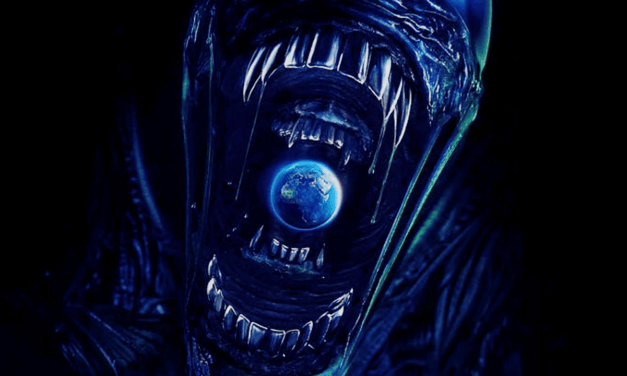Listen to this article (10:36 min)
Please also see the main article of which this is a sidebar that appeared in Christian Research Journal, Volume 48, number 02 (2025), entitled, “Persons Don’t Disintegrate: Apple TV’s ‘Severance’ and the Continuity of Identity Problem“.
This article was published exclusively online in the Christian Research Journal, Volume 48, number 02 (2025).
When you support the Journal, you join the team and help provide the resources at equip.org that minister to people worldwide. These resources include our ever-growing database of more than 2,500 articles and Bible Answers, as well as our free Postmodern Realities podcast.
Another way you can support our online articles is by leaving us a tip. A tip is just a small amount, like $3, $5, or $10, which is the cost of a latte, lunch out, or coffee drink. To leave a tip, click here.
(Editor’s Note: This article contains spoilers for
Seasons 1 and 2 of Apple TV’s Severance)
What if it were possible to erase painful memories, such as grief, shame, trauma, anxiety, or depression? What if a severing procedure would allow a person to completely separate personal memories from work memories? This is the central premise of the popular show Severance.1 It features a fictional corporation called Lumon Industries where certain employees submit to a severing procedure through implanting a chip in the brain. Once they arrive at the Lumon office, their work self is free from remembering any suffering experienced in their personal life. When they exit Lumon at the end of the workday, their personal self has no memory of anything that happens at work. The show raises serious questions about whether being severed is a path to the good life or if it is a traumatic and dehumanizing existence? We will investigate three questions. First, how plausible is the severing technology? Second, what is the human cost of eradicating negative emotions by erasing memories? And finally, why does Severance matter?
How Plausible Is the ‘Severing’ Technology? Even though the show does not explain the exact nature of the fictional severing technology, it is implied that the technology not only blocks memories but essentially separates a person into two distinct consciousnesses, an “innie” and an “outie.” For example, in Episode 10 of Season 2, innie Mark and outie Mark2 have a conversation with each other through a camcorder at the Lumon birthing cabin.3 This scene portrays Mark as essentially two distinct consciousnesses. But is it possible to create two distinct conscious perceivers within one person? To help us evaluate the plausibility of this never-before-seen technology, we can look to the scientific findings of split-brain patients. These patients provide cases that are akin to Lumon’s severing procedure.
Split-brain procedures have been performed since the 1940’s to alleviate severe epilepsy symptoms. During the procedure, the neural fibers connecting the left and right cerebral hemispheres are severed. The traditional view is that split-brain patients experience a split consciousness.4 However, the traditional view is being challenged by new research, including that of cognitive neuroscientist Michael S. Gazzaniga. In his paper “Shifting Gears: Seeking New Approaches for Mind/Brain Mechanisms,” Gazzaniga aims to discover why each split-brain patient seems so normal in everyday life and so integrated with a singular purpose.5 Gazzaniga views the brain as a complex neural system that is highly modular. His experiments reveal that the brains of patients with severed hemispheres coordinate activities to produce an apparent unified output.6 Still, an open research question remains: that is, how do the modules come to interact and produce unitary goals? We can expect ongoing research on split-brain patients to answer this question. At present, there is no technology that can sever a person’s consciousness. It is more plausible that the severed characters in Severance are experiencing a fragmented personality, not a split consciousness.7
In a recent Bioethics Education article, neurosurgeon Hoomin Azmi says, “I do not believe the memory control Severance depicts is entirely out of the realm of possibility — just not in the foreseeable future. We’ll probably reach the day that perhaps we can deselect memories, but I think that’s many years away.”8 Thus, even if neurosurgeons, like Azmi, acknowledge that there is no known technology that can split a person’s consciousness, there is research underway that focuses on erasing memories that cause emotional suffering.
At least some of the severed characters in Severance are initially persuaded to undergo the severing procedure because they want to be relieved from the emotional suffering caused by debilitating memories. For instance, we know the character Mark Scout submits to the severing procedure because he believes his wife Gemma died in a tragic car accident, and he is desperate to escape his paralyzing grief. We know less about the motivations of the other severed employees, but we can infer they are also trying to escape some kind of emotional suffering.
The first time I became aware of using technology to erase memories was from David Pearce. He is a philosopher, transhumanist, and the co-founder of Humanity+, where he directs their superhappiness project. In an interview he said, “In the future I think all bad memories will be selectively erased.”9 The idea of abolishing suffering is central to transhumanism’s superhappiness project. Pearce is not alone in his thinking. The journal Current Biology published a paper in which the authors provide evidence that they have successfully erased select memories from a snail.10 They are now working to apply this technology to human patients. The aim of developing this technology for humans is to selectively target and erase memories for people who suffer from PTSD, anxiety disorders, and certain phobias.
The journal Trends in Neurosciences featured a paper entitled “How to Erase Memory Traces of Pain and Fear.”11 The authors Jürgen Sandkühler and Jonathan Lee conclude by saying, “There is clearly a great demand for true reversal of the long-lasting plasticity that underlies chronic pain and anxiety; that is, to erase memory traces of pain and fear. Understanding of how to achieve this goal is only just emerging.”12 Is there truly a great demand for erasing memories? Adam Scott, the actor who plays Mark on Severance, was asked by People magazine if he would want to undergo the severing procedure if it became a real thing? Adam responded, “I really hope it doesn’t. And no, I would not. I’m afraid that people would be all too willing to give up autonomy of their mind and their body, and I think we should stay far, far away from it. Not a good idea.”13 If it is true that there is a growing demand to erase memories, we should be ready to offer thoughtful critiques of Severance and why it is not a good idea to be severed. In summary, even though the severing technology is not yet possible, researchers are currently developing technologies to erase memories. As these emerging technologies become available, we must consider the human cost of eradicating negative emotions by erasing memories.
What Is the Human Cost of Eradicating Negative Emotions? The initial temptation to be severed may be compelling, especially if you want relief from grief or traumatic memories. The idea that only positive feelings are good for a person’s well-being and negative feelings are essentially bad for well-being is at the heart of the moral philosophy called negative utilitarianism. David Pearce promotes this view in his book The Hedonistic Imperative, where the primary moral concern is to reduce suffering in order to secure happiness.14 However, there are serious consequences to eradicating negative emotions.
It turns out that negative emotions, including sadness, anger, depression, grief, jealousy, guilt, shame, anxiety, and fear, are actually valuable for our well-being. Philosophers Julien Deonna and Fabrice Teroni argue in their paper “Feel Bad, Live Well!” that negative emotions are fundamentally valuable for human flourishing.15 Negative emotions provide information to us about the world and ourselves. For example, our moral anger can draw our attention to genuine injustice and how we should respond appropriately. Similarly, by experiencing guilt I am provided with a signal that I may have done something wrong. Grief is not simply a feeling of sadness; it corresponds to the intensity of the love you had for your loved one. Grief can be seen as a way of maintaining a connection to the memory of your loved one, something that Mark forfeited when he was severed. Negative emotions provide self-knowledge and self-understanding, which can initiate self-reflection and motivate self-reform and virtue.16
Another strange consequence of eradicating negative emotions by erasing memories is that the person still lives in a world with the distressing circumstance but will not be able to respond with the appropriate emotions that correspond to reality. For example, innie Mark experiences no feelings of grief over his loss of Gemma because he has no memory of her while at work. For eight hours each day, he is free from his negative emotions related to the loss of Gemma. The result is a prolonged grieving process for outie Mark because his grieving is constantly being interrupted and delayed. Fundamentally, erasing bad memories separates us from reality.
Philosopher Robert Nozick argued that there is more that matters to us than our feelings. In his book Anarchy, State, and Utopia, he introduces his famous thought experiment called the Experience Machine.17 The Machine will give us any experience we desire. Even if we have the option to plug into an Experience Machine that will simulate any experience we desire, we will soon realize that what matters more is that we want to do things, not just have a simulated experience of doing them. We want to be a certain sort of person, not just have a simulated experience of being that person.18 What we are is important to us. Nozick concludes saying, “Perhaps what we desire is to live in contact with reality. And this, machines cannot do for us.”19 If what we are is important, then erasing our bad memories to achieve an artificial happiness is not the path to the good life because it severs us from reality. By considering the consequences of erasing bad memories, we realize that living our lives in contact with reality matters more.
The most shocking outcome of erasing memories (on Severance) relates to the emotional suffering experienced by the innies. Although the outie characters are relieved of their particular suffering while their innies are at work, their innies continue to experience horrific emotional suffering at the hands of their Lumon bosses. For example, severed employees are subjected to psychological torture in the “break room,”20 they are trapped in a windowless office building with no access to natural light or nature, and they have to navigate endless stark hallways that resemble a rat’s maze. These conditions are likely to result in depression, trauma, and post-traumatic stress disorder. The perpetual lack of exposure to natural light is a subtle type of torture and can be overlooked but is very damaging to mental health. Psychologist Martha Newson argues, “Cutting out natural light is a big no-no for mental well-being and potentially physical well-being, too.”21
The innies, as noted, continue to experience emotional suffering while at Lumon, which means that even though the outies believe they are eliminating their suffering for eight hours a day, their innies are enduring appalling emotional suffering carried out by their sinister Lumon employers. In fact, the amount of suffering each innie endures over time may actually surpass the suffering of their outies. I predict that Season 3 of Severance will further reveal how Lumon Industries is responsible for even more unspeakable suffering for both the outies and innies, especially as it relates to the innies’s “mysterious and important” work. To sum up, considering all of these consequences, it is reasonable to conclude that severing yourself from reality by eradicating negative emotions by erasing memories is not the path to the good life.
Why Does Severance Matter? Sometimes the average viewer fails to think carefully about science fiction shows that feature an implausible, never-before-seen technology. Undiscerning viewers fall into roughly two categories. Either they are gullible and accept the severing technology as feasible and beneficial, or they dismiss it because they believe it is too far-fetched. I have suggested that Lumon’s severing technology is implausible, but we should pay close attention to the development of the emerging technology that could erase memories.
In our technological society, most people equate new technology with progress. It is often assumed that if scientists can do something, they should do it. What complicates matters further is that the pace of scientific innovation usually exceeds our ability to thoughtfully critique it. Logical critiques using philosophical and ethical arguments are certainly needed; they are necessary, but not sufficient. Shows like Severance are valuable because they help us imagine the human cost of emerging technologies.
C. S. Lewis was convinced that philosophical arguments “dipped in story” are extremely valuable because the meaning of the story impacts us more powerfully and clearly than a logical argument. In his famous essay “Bluspels and Flalansferes,” he wrote, “For me, reason is the natural organ of truth, but imagination is the organ of meaning.”22We grasp meaning first by using our imagination, then we judge its truth value.
Walker Percy also argued that science fiction matters. In his essay “Notes for a Novel About the End of the World,” he describes the novelist as the canary in a coal mine.23 When the canary is overcome by dangerous conditions, he cries out and then collapses. This is a signal to the miners to escape harm by getting out of the mine. Dan Erickson, the writer of Severance, is our canary. His story warns us of the dehumanizing consequences of manipulating people by erasing their memories. Stay tuned for Season 3 of Severance. I anticipate the show will continue to resemble a reductio ad absurdum24 argument that is “dipped in story,” meaning it will depict the human cost of the severing technology and show how it leads to a dehumanizing existence.
Julie Miller earned a PhD in Humanities (Philosophy) from Faulkner University’s Great Books Honors College, where her dissertation research focused on critiquing the philosophy of transhumanism. She is the author of Critiquing Transhumanism: The Human Cost of Pursuing Techno-Utopia (Public Philosophy Press, 2022). Julie has served with Ratio Christi, a campus apologetics ministry, since 2011 and is a Senior Fellow at the Society for Women of Letters.
NOTES
- Severance, created by Dan Erickson, directed principally by Ben Stiller, seasons 1 and 2, Red Hour Productions and Fifth Season, distributed by Apple TV+, 2022–, rated TV-MA.
- Innie refers to an individual’s “work self” at Lumon Industries, while outie represents their “personal life” outside of work.
- Severance, season 2, episode 10, “Cold Harbor,” created and written by Dan Erickson, directed by Ben Stiller, Red Hour Productions and Fifth Season, distributed by Apple TV+, released March 21, 2025. The birthing cabin is equipped with a severance threshold. Severed mothers can elect to have their innies experience the pain and trauma of childbirth.
- R. W. Sperry, “Hemisphere Deconnection and Unity in Conscious Awareness,” American Psychologist 23, no. 10 (1968): 723–733, https://doi.org/10.1037/h0026839.
- Michael S. Gazzaniga, “Shifting Gears: Seeking New Approaches for Mind/Brain Mechanisms,” Annual Review of Psychology 64, January 2013, 13, https://www.annualreviews.org/content/journals/10.1146/annurev-psych-113011-143817\.
- Gazzaniga, “Shifting Gears,” 1.
- “Personality Disintegration,” American Psychological Association Dictionary of Psychology, April 19, 2018, https://dictionary.apa.org/personality-disintegration. Personality fragmentation occurs when “the individual no longer presents a unified, predictable set of beliefs, attitudes, traits, and behavioral responses. The most extreme examples of disintegrated, disorganized personality are found in the schizophrenias.”
- Ana Lita, “How Realistic Is the Severance Procedure? Brain Surgeons Have Some Thoughts,” Bioethics Education, March 21, 2025, https://bioethicseducation.org/how-realistic-is-the-severance-procedure-brain-surgeons-have-some-thoughts/.
- James Kent, “Blueprint for a Cruelty-Free World,” H+ Magazine, Autumn 2009, https://www.hedweb.com/transhumanism/interview.html.
- Jiangyuan Hu, Larissa Ferguson, Kerry Adler et al., “Selective Erasure of Distinct Forms of Long-Term Synaptic Plasticity Underlying Different Forms of Memory in the Same Postsynaptic Neuron,” Current Biology 27, no. 13 (2017): 1888–1899, https://www.cell.com/current-biology/fulltext/S0960-9822(17)30647-4.
- Jürgen Sandkühler and Jonathan Lee, “How to Erase Memory Traces of Pain and Fear,” Trends in Neurosciences 36, no. 6 (2013): 343–352, https://www.cell.com/trends/neurosciences/comments/S0166-2236(13)00051-9.
- Sandkühler and Lee, “How to Erase Memory Traces of Pain and Fear,” 350.
- Dory Jackson, “Adam Scott Hopes the Severance Procedure Never Exists: ‘I’m Afraid People Would Be All Too Willing,’” People, February 28, 2025, https://people.com/adam-scott-hopes-severance-procedure-never-exists-exclusive-8772910.
- David Pearce, The Hedonistic Imperative, HedWeb.com, Introduction, accessed May 4, 2025, https://www.hedweb.com/hedethic/hedonist.htm. Negative utilitarianism seeks to minimize or abolish suffering. It differs from positive utilitarianism, which seeks to maximize pleasure.
- Julien Deonna and Fabrice Teroni, “Feel Bad, Live Well! The Value of Negative Emotions for Well-being,“ University of Geneva Philosophy Department, 2020, 14–15, https://www.unige.ch/lettres/philo/recherche/thumos/projects/feel-bad-live-well-value-negative-emotions-well-being.
- Deonna and Teroni, “Feel Bad, Live Well!,” 16–18.
- Robert Nozick, Anarchy, State, and Utopia (New York: Basic Books, 1974), 42–45.
- Nozick, Anarchy, State, and Utopia, 43.
- Nozick, Anarchy, State, and Utopia, 45.
- The “break room” is where severed employees who break Lumon’s rules are punished. They are forced to repeat a “Compunction Statement” hundreds or thousands of times until they are physically, mentally, and emotionally exhausted.
- Jess Thomson, “What Severance Life Would Really Be Like, According to a Psychologist,” Scientific American, March 19, 2025, https://www.scientificamerican.com/article/what-severance-life-would-really-be-like-according-to-a-psychologist/.
- C. S. Lewis, “Bluspels and Flalansferes,” in C. S. Lewis, Selected Literary Essays (Cambridge University Press, 1969), 265.
- Walker Percy, The Message in the Bottle: How Queer Man Is, How Queer Language Is, and What One Has to Do with the Other (1975; Open Road Media, n.d.), 101, Kindle Edition.
- A reductio ad absurdum argument disproves a proposition by showing it leads to an absurdity when carried to its logical conclusion.










